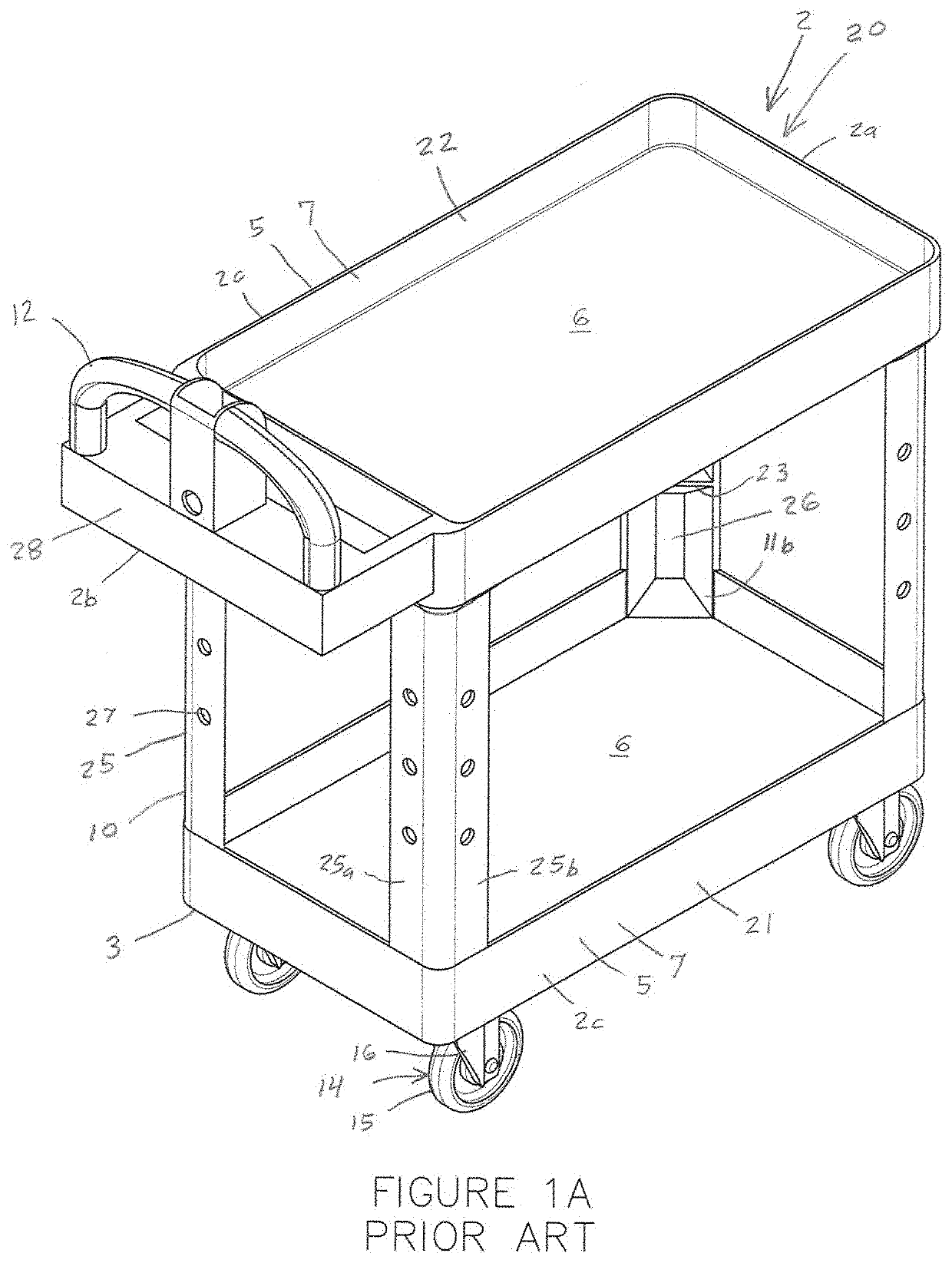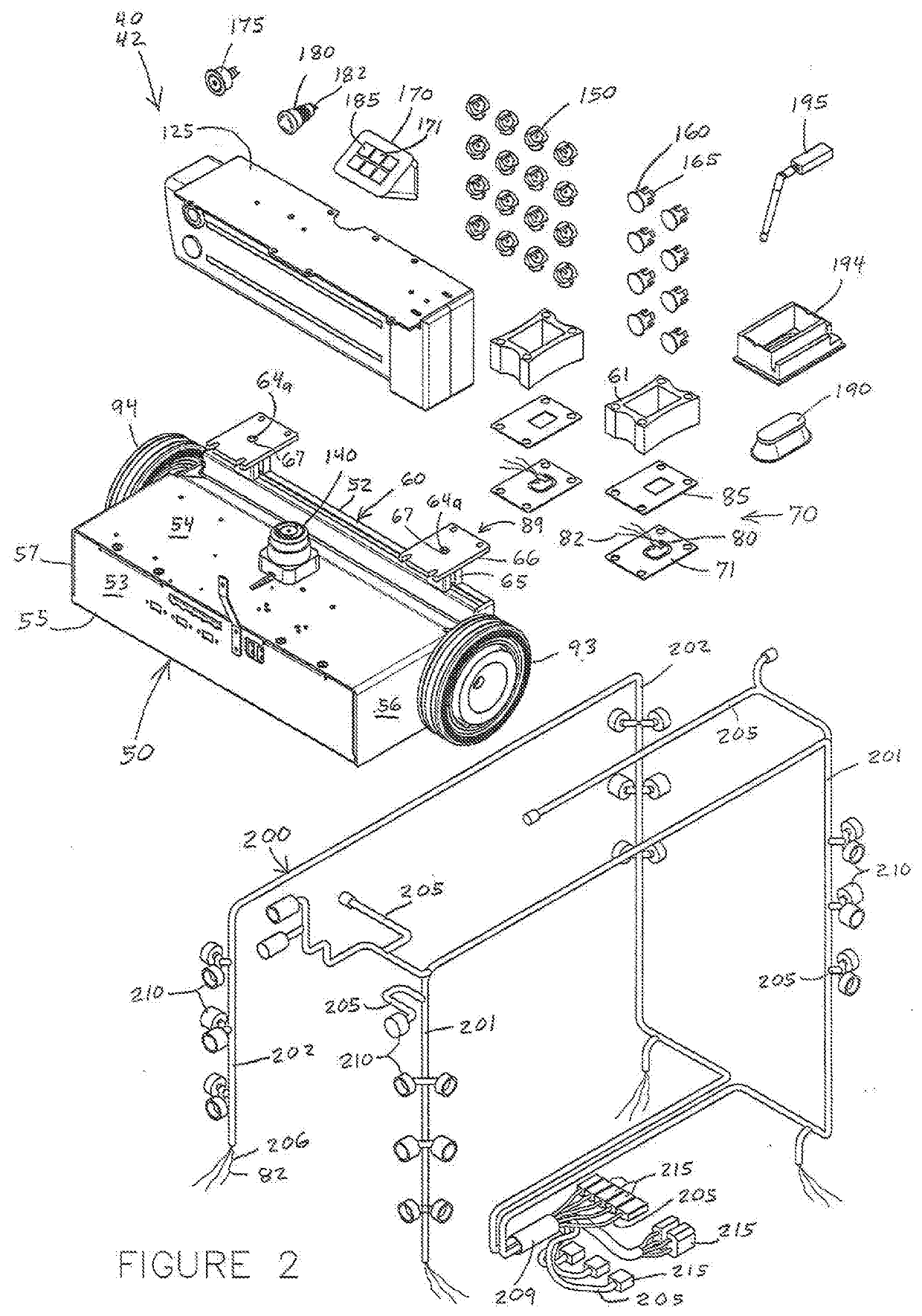Autonomous Utility Cart and Robotic Cart Platform
- Summary
- Abstract
- Description
- Claims
- Application Information
AI Technical Summary
Benefits of technology
Problems solved by technology
Method used
Image
Examples
embodiment 20
[0043]A plastic embodiment 20 of the conventional utility cart 2 is shown in FIGS. 1A, 1B and 6-9. Although the size and shape of the plastic utility cart 20 can vary, the cart 20 shown has a length of about 39 inches, width of about 17 inches, height of about 33 inches and weight of about 31 pounds, and four caster wheel assemblies 14 with five inch diameter wheels. The cart 20 has two robustly designed plastic trays 21 and 22. The stacked trays 21 and 22 have a rectangular shape and a depth of about 2½ inches. Each tray 21 and 22 has structural webbing 23 supporting its upper surface 6. The webbing 23 forms compartments or openings 24 under the surface 6 of the tray. The solid upper wall or surface 6 of each tray uniformly spans the length and width of the rectangular tray 21 and 22. The cart 20 has four robustly designed plastic risers 25. Each riser 25 has an L-shaped cross-sectional shape with perpendicular sides 25a and 25b that form an inner channel 26 along its vertical leng...
embodiment 30
[0044]A metal embodiment 30 of the conventional cart 2 with its two front caster wheel assemblies 14 removed is shown in FIG. 12. This cart 30 has three robustly designed lower 21, upper 22 and middle 23 wire mesh trays or baskets. The stacked trays 21-23 have a rectangular shape. The corners of the trays 21-23 are joined together by four metal, vertical, tubular risers 35. Each tubular riser 35 has an open interior 36 and an open bottom end 37. The mounting structure 18 of each caster wheel assembly 14 takes the form of a mounting bracket or plate 17 with an upwardly extending mounting post 39. Each mounting post 39 is secured to the cart mounting structure 8, which takes the form of the open bottom end 37 of the tubular risers 35 that receives the post 39 in an in-line manner.
[0045]The present invention pertains to a robotic cart platform system integrated into a conventional cart 2, 20, 30 to form an autonomous robotic cart generally indicated by reference numbers 40 and 45 as sh...
PUM
 Login to View More
Login to View More Abstract
Description
Claims
Application Information
 Login to View More
Login to View More - R&D
- Intellectual Property
- Life Sciences
- Materials
- Tech Scout
- Unparalleled Data Quality
- Higher Quality Content
- 60% Fewer Hallucinations
Browse by: Latest US Patents, China's latest patents, Technical Efficacy Thesaurus, Application Domain, Technology Topic, Popular Technical Reports.
© 2025 PatSnap. All rights reserved.Legal|Privacy policy|Modern Slavery Act Transparency Statement|Sitemap|About US| Contact US: help@patsnap.com



